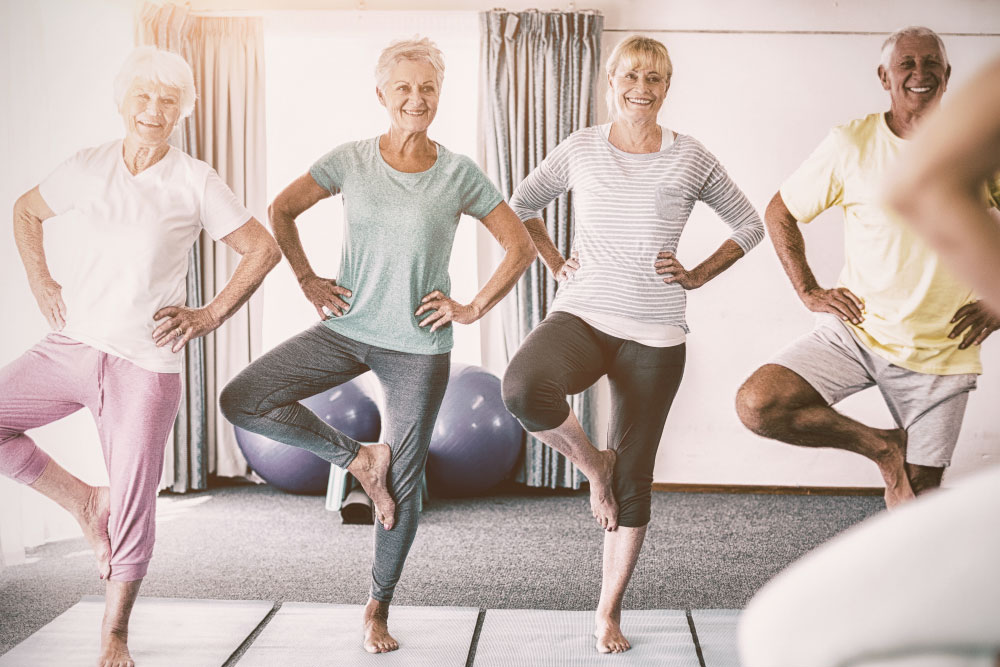Finding Balance—What to Know About Fall Prevention Among Seniors

Millions of Americans fall each year, but the issue is more common and more serious in older adults. In fact, the American Council on Aging reports that one in four seniors falls every year.
Because our muscle and bone mass decrease as we age, falls in older adults often have more serious consequences than in younger adults. Falls are the leading cause of both fatal and nonfatal injuries for those 65 and older.
While some factors that increase fall risk can’t be changed, there are many steps that you can take to prevent falls.
The first step is knowing and understanding the potential causes of falls.
Fall Prevention: Taking a Look at the Causes
There are five main factors behind most falls in older adults. These include:
- Chronic medical conditions. The majority of older adults have at least one chronic condition, such as diabetes or arthritis, that make it more difficult to walk.
- Difficulties with balance and walking. A lack of physical activity can make this worse, making falls more likely.
- Environmental factors. While older adults may still be living in the same home they’ve lived in for years, some parts of it may make falls more likely. There are many fall hazards in the home.
- Certain medications. Because seniors often have multiple medical conditions, they also often take a large number of medications. Many medications can cause dizziness or dehydration, which are both factors in falls.
- Vision issues. As we get older, less light reaches the eye’s retina, which can diminish vision and make tripping hazards more difficult to see.
Fall Prevention: Learning How to Limit Risks
Now that you know the most common causes of falls among older adults, it’s important to know that many of them can be prevented.
Start with regular physical and eye checkups. These checkups can help doctors learn about your or your loved one’s current health status.
During an appointment, you should also feel comfortable sharing any problems that are causing difficulty with balance or walking. Speak up if you feel like a medication seems to be causing these problems, or if it’s becoming more difficult to see, particularly at night.
Staying active—and specifically, doing balance exercises—can help improve the ability to walk and move around, which will make falls less likely. It’s also important to get plenty of vitamin D and calcium, which help fortify bones and limit the effects of falls.
When it comes to the home environment, it’s important to look for potential fall hazards. While we may be easily able to navigate around these hazards when we’re younger, it’s more difficult as we age.
Items like loose rugs, dim lighting, clutter, and hanging cords can all cause falls and should be removed. In addition, handrails should be placed in areas of the home, like the stairs and the bathroom, to make navigating them safer.
Fall Prevention: Ways Senior LIFE Can Help
When it comes to preventing falls, we could all use a helping hand. Because Senior LIFE was designed specifically with the unique needs of seniors in mind, many of our services can help older adults manage fall risk.
Rehabilitation therapies, including occupational therapy, are often included as part of a member’s individualized care plan. Occupational therapists can come to the member’s home environment to assess fall risk and help suggest changes that will help prevent falls.
Members can take part in exercise, including balance activities, as part of the recreational, social activities available at the Senior LIFE Center.
Nutritional counseling is also available to help ensure members are getting the nutrients they need to remain healthy—and keep their bones strong. And our pharmacy services team helps members manage their medications and any side effects that may increase falls risk.
More and more seniors are choosing to remain in the home as they age. If this describes you or a loved one, find the Senior LIFE location nearest you to learn more about the program and whether you’re eligible.
Categories: Wellness Matters

